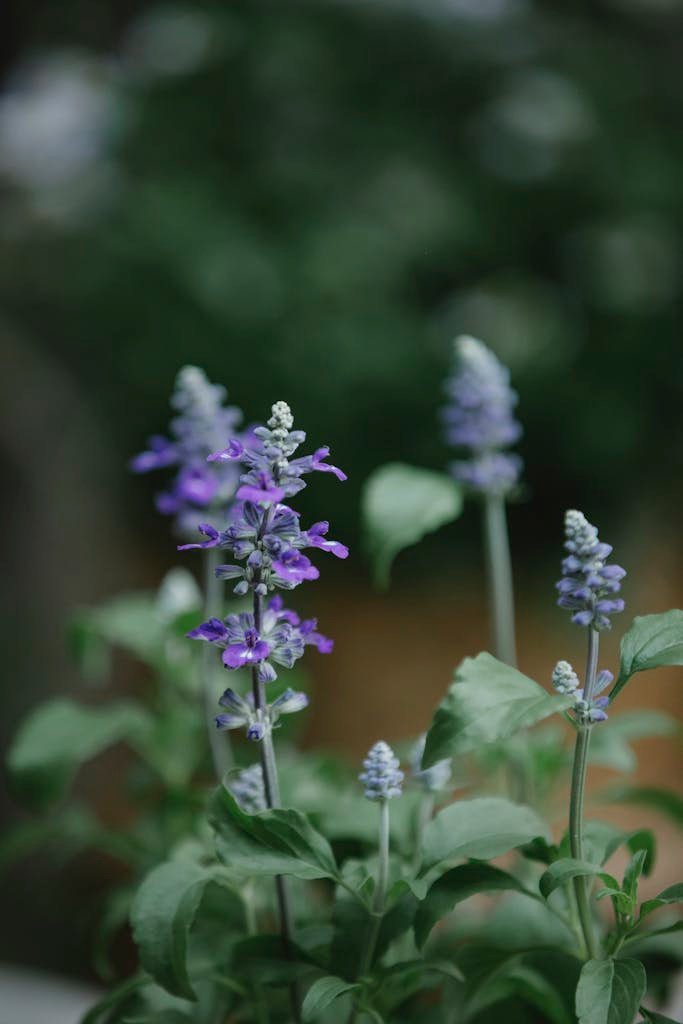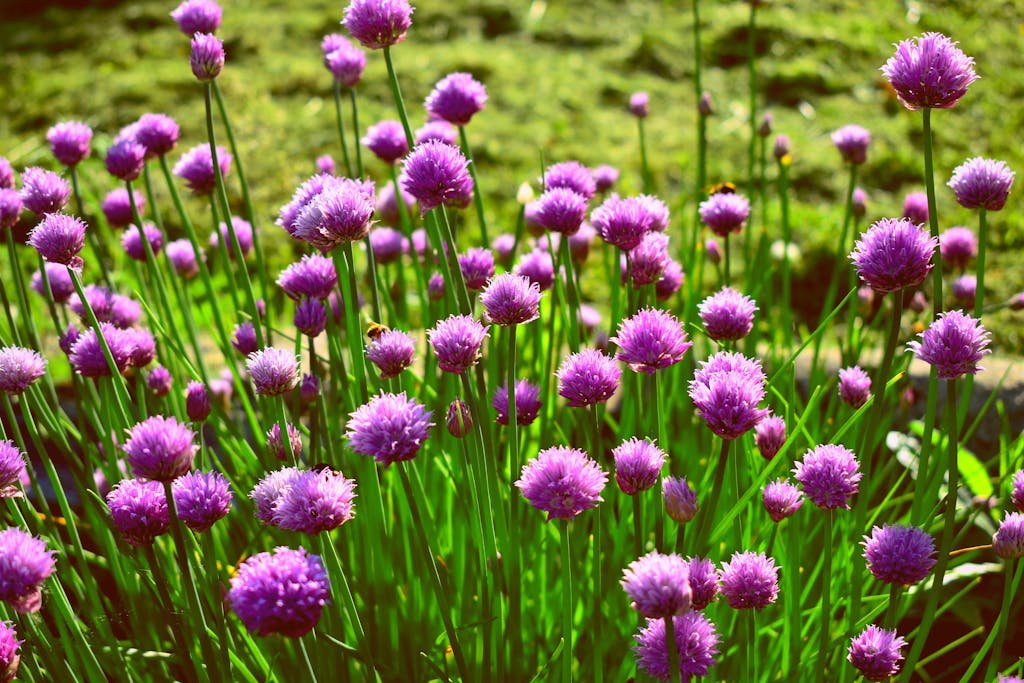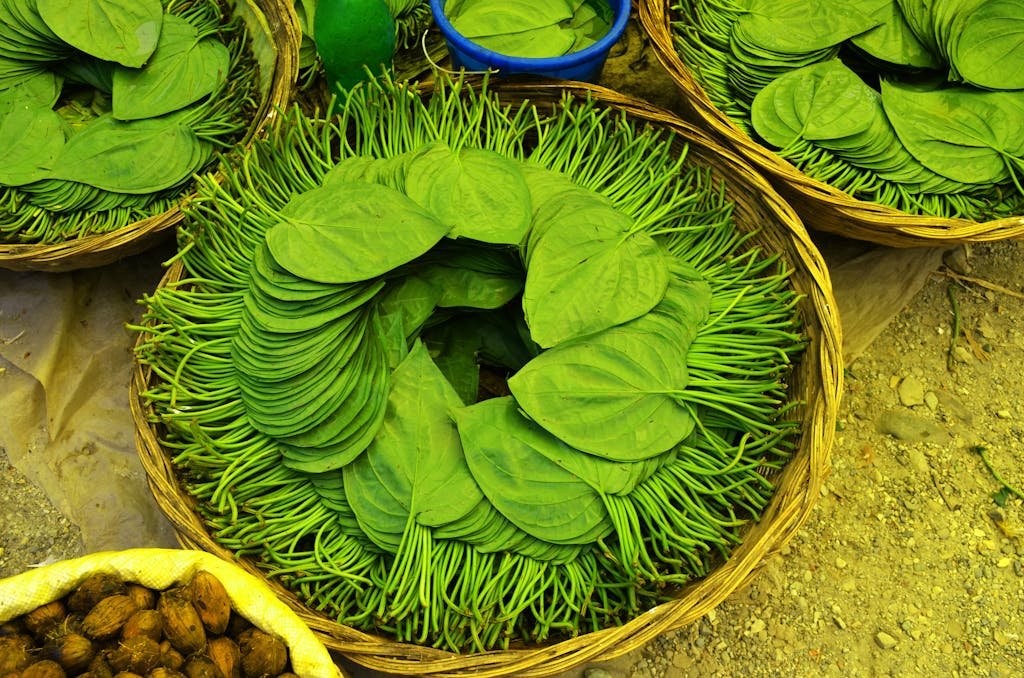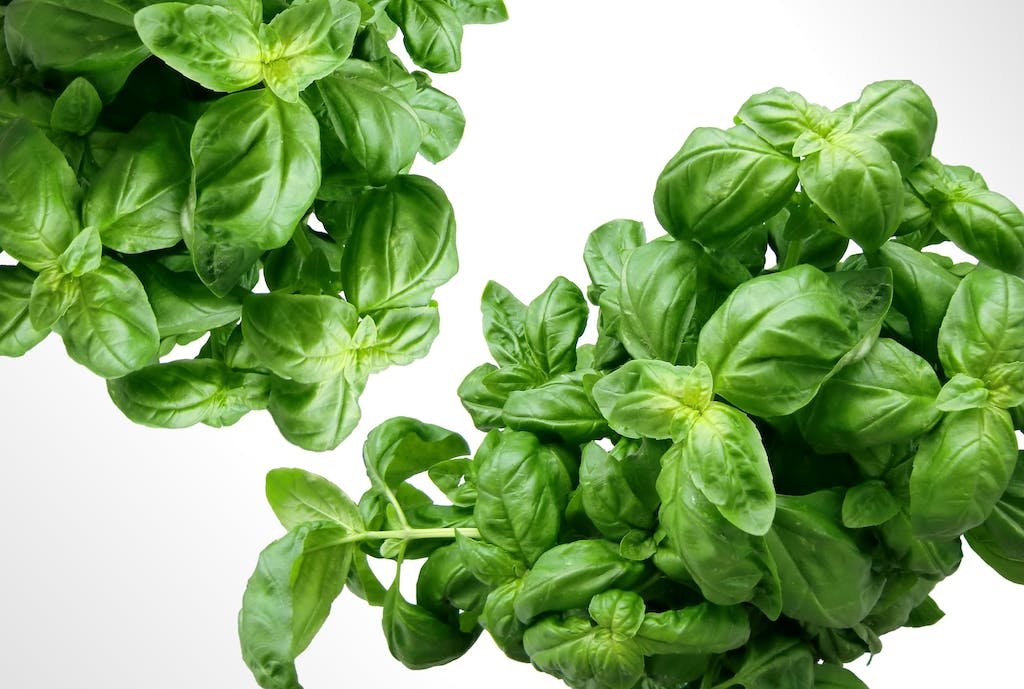Peppermint – (Mentha x piperita)
Peppermint, or Mentha x piperita, isn’t just a flavor for your favorite gum or candy; it’s a versatile plant with a rich history and a plethora of benefits. Originating from Europe and Asia, this hybrid mint has found its way into gardens and homes around the globe, loved for its aromatic leaves and therapeutic properties.
With its invigorating scent and cooling sensation, peppermint has become a staple in both culinary and medicinal contexts. Whether it’s brewed into a soothing tea or used in natural remedies, peppermint’s potency and appeal are undeniable. Let’s dive into the world of peppermint and discover what makes this herb a must-have in your wellness toolkit.
Key Takeaways
- Peppermint (Mentha x piperita) is a versatile and aromatic plant with a rich history, originating from Europe and Asia, and offers a wide range of culinary, medicinal, and aesthetic benefits.
- Scientifically a hybrid between watermint and spearmint, peppermint thrives in temperate climates and propagates primarily through runners, with its leaves and essential oils containing significant health and flavor properties.
- Culinary uses of peppermint span from soothing teas which aid digestion to desserts and savory dishes, enhancing them with its cool, refreshing flavor and contributing visually with its vibrant green leaves.
- Medically, peppermint is valued for its ability to alleviate symptoms of irritable bowel syndrome (IBS), act as a natural pain reliever for headaches and migraines, and serve as a decongestant and antimicrobial agent for respiratory health.
- Growing peppermint requires well-drained soil, partial to full sunlight, and regular watering. Harvesting in the morning when the oil concentration is highest can maximize its aromatic and medicinal benefits.
- Peppermint’s enduring appeal and utility in both traditional and modern medicine underscore its significance as a natural remedy and culinary ingredient, continuing to make it a subject of interest for research and cultivation.
History of Peppermint
The journey of peppermint, or Mentha x piperita, through history is as rich and stimulating as its fragrance. Originating from Europe and Asia, peppermint has woven its way through various civilizations, acting both as a culinary delight and a therapeutic staple. Ancient texts and archaeological findings indicate that peppermint was highly valued by the Greeks, Romans, and Egyptians, not only for its pleasant aroma and taste but also for its assortment of health benefits.
In the ancient world, peppermint leaves were often strewn across floors to release their aromatic scent, a practice that highlighted the herb’s esteemed status in daily life and ceremonies. Fast forward to the 18th century, when peppermint began to be cultivated commercially in England, marking the beginning of its global journey into modernity. This period underscored a pivotal shift in how peppermint was perceived and utilized, transitioning from wild herb to a cultivated plant with expansive uses.
Research on peppermint has since proliferated, solidifying its position as more than just a flavorful addition to confectioneries. Studies have illuminated peppermint’s remarkable properties, from its ability to soothe digestive issues to providing relief from headaches and respiratory ailments. The intersectionality of history and science reveals a deeper understanding of peppermint’s enduring appeal and multifaceted uses.
Peppermint’s cultivation and utilization have continued to evolve, highlighting its adaptability and enduring relevance. As agriculture techniques advanced, so did the accessibility and variety of peppermint products, ranging from essential oils to pharmaceuticals. The herb’s robust profile has made it a subject of ongoing interest in both historical and scientific communities, emphasizing its significant place in both past and present narratives.
The story of peppermint is far from over, as contemporary researchers and herbalists uncover new applications and benefits of this versatile plant. Its continued prevalence in both traditional and modern medicine underscores peppermint’s unwavering value to human health and culture.
Botanical Characteristics of Peppermint
Peppermint, scientifically known as Mentha x piperita, is a hybrid mint, a cross between watermint and spearmint. Its botanical characteristics are not just fascinating but also contribute significantly to its potent aroma and its wide range of applications.
Growth and Plant Structure
Peppermint plants thrive in temperate climates, showing a preference for moist, shaded locations. However, they are remarkably adaptable, capable of growing in various environments. Typically, peppermint reaches heights of 30 to 90 cm, presenting itself with square stems that resist bending. Its root system is fibrous and extensive, aiding in the rapid spread of the plant.
The leaves of the peppermint plant are visually striking due to their dark green color, with pronounced veins running through them. They are ovate, serrated, and possess a smooth texture, ranging between 4 to 9 cm in length. When crushed, the leaves exude the characteristic refreshing scent, attributed to the high concentrations of essential oils, particularly menthol.
Flowering and Reproduction
During the flowering period, usually from July to August, peppermint boasts slender spikes of purple flowers. These flowers are rich in nectar, attracting a multitude of pollinators, thus playing a crucial role in the ecosystem. Despite its ability to produce seeds, peppermint primarily propagates through runners, a type of vegetative reproduction, which allows for the rapid establishment of new plants.
Genetic Composition and Varieties
Peppermint is a sterile hybrid, meaning it does not produce viable seeds. This characteristic necessitates propagation through root division or cuttings. Over the years, selective breeding and careful cultivation practices have given rise to various cultivars, each boasting unique characteristics such as differing menthol content or altered resistance to environmental stressors.
Researchers and botanists continue to study the genetic makeup and adaptability of peppermint. Their work helps in understanding how this plant can be optimized for commercial cultivation, ensuring a consistent supply of high-quality peppermint for various uses.
Culinary Uses of Peppermint
Peppermint, with its distinctively fresh aroma and cool, refreshing taste, is a versatile herb that enhances a wide array of culinary creations. Its leaves, both fresh and dried, are widely used in cooking and baking, infusing dishes with its vibrant flavor. Peppermint’s culinary applications span from simple teas to complex desserts, demonstrating its adaptability and appeal.
In the realm of beverages, peppermint tea is perhaps the most well-known use of this herb. Celebrated for its digestive benefits, a cup of peppermint tea can soothe the stomach and promote digestion. This is not just folk wisdom; studies have backed up peppermint’s effectiveness in aiding digestion. Moreover, peppermint oil is often added to cocktails and mocktails, providing a burst of freshness that elevates the drink.
Desserts are another domain where peppermint shines. It’s a key ingredient in chocolates, candies, and ice creams. The classic combination of peppermint and chocolate is particularly beloved, offering a balance between the richness of chocolate and the refreshing zing of peppermint. This pairing is not just about taste; research suggests that peppermint can stimulate the senses, making desserts feel more indulgent without adding calories.
Peppermint is not restricted to sweets and beverages. It also finds its place in savory dishes. Fresh peppermint leaves are a fantastic addition to salads, where they add a crisp, refreshing flavor. They can also be blended into sauces and dressings, contributing a cool undertone to the dish. The versatility of peppermint extends to its ability to complement meats, especially lamb, lending a fresh, herby flavor that cuts through the richness of the meat.
Furthermore, peppermint’s appeal in culinary applications is not just about flavor. Its vibrant green leaves can add a pop of color to dishes, making them visually appealing. This aesthetic value, combined with its health benefits and flavor profile, makes peppermint a prized ingredient in kitchens around the world.
Medicinal Properties of Peppermint
Peppermint, or Mentha x piperita, is not only celebrated for its culinary versatility but also for its striking medicinal properties. Researchers have delved into its benefits, uncovering evidence that supports its historical use in traditional medicine. This robust body of research sheds light on how peppermint can positively impact health, particularly its essential oils, which are rich in menthol, menthone, and limonene.
One of the most documented uses of peppermint is for digestive health. Studies have shown that peppermint oil can significantly alleviate symptoms of irritable bowel syndrome (IBS), including bloating, gas, and pain. The antispasmodic properties of menthol relax the muscles of the digestive tract, making peppermint a natural remedy for digestive discomfort.
| Benefit | Effect |
|---|---|
| Digestive Health | Alleviates symptoms of IBS, bloating, gas, and pain |
| Pain Relief | Offers headache and migraine relief through topical application or inhalation of its oil |
| Respiratory Health | Acts as a decongestant, helping to clear the sinuses and relieve throat irritation |
Peppermint’s efficacy extends to pain relief, particularly for headaches and migraines. Applying peppermint oil topically to the forehead and temples or inhaling its fragrance has been found to provide relief from headache symptoms. The cooling effect of menthol plays a critical role in its analgesic properties, offering a natural alternative to over-the-counter pain medications.
In respiratory health, peppermint acts as a natural decongestant. Its menthol content is effective in clearing sinuses and relieving throat irritation, making it a go-to remedy for colds and flu. The antimicrobial properties of peppermint also contribute to its ability to fight respiratory infections by inhibiting the growth of bacteria and viruses.
Moreover, peppermint has been examined for its anxiolytic effects, suggesting its potential to reduce anxiety and stress. The soothing aroma of peppermint oil can calm the mind and body, highlighting its role in aromatherapy.
Peppermint’s medicinal properties are vast and varied, making it a potent plant for natural health interventions. Its ability to soothe, relieve, and calm not only enhances its culinary uses but also solidifies its status as a valuable herbal remedy.
Growing and Harvesting Peppermint
Peppermint, or Mentha x piperita, thrives in cool, moist environments, making it a versatile plant that can be grown in various climates. Essential for peppermint cultivation is well-drained soil and partial to full sunlight exposure. Gardeners often plant peppermint in containers to prevent its aggressive spread in garden beds. Consistent watering and the occasional application of a thin layer of mulch help in maintaining soil moisture, crucial for peppermint’s growth.
When it comes to planting peppermint, they can begin from seeds, cuttings, or transplants. However, starting from cuttings or transplants is generally more successful than seeds. The spacing between plants should be approximately 18 to 24 inches to allow for its rapid growth and spread. Peppermint is hardy and can grow back year after year in zones 3 through 11, showcasing its adaptability to different geographical locations.
Harvesting peppermint is a rewarding process and is best done in the morning when the essential oils are most concentrated. This usually takes place just before the plants flower, as this is when the leaves contain the highest oil content. To harvest, one should cut the stems just above the first or second set of leaves, encouraging bushier growth and preventing the plant from getting leggy.
Annual pruning is vital for the health of the peppermint plant. Not only does it prevent overgrowth, but it also stimulates the production of more leaves, which are the source of peppermint’s flavor and aroma. If growing peppermint for its essential oils, a second harvest right before flowering can yield the most potent essential oils.
After harvesting, peppermint leaves can be used fresh, dried, or frozen for later use. They retain their potent aroma and flavor, making them ideal for culinary, medicinal, and aromatic applications. When drying peppermint, it’s optimal to do so in a dark, well-ventilated area to preserve the essential oils.
Through proper planting, care, and harvesting techniques, gardeners can ensure a steady supply of peppermint, harnessing its myriad of uses and benefits without the need for commercial products.
Peppermint’s journey from ancient civilizations to modern-day kitchens and medicine cabinets underscores its enduring appeal and versatility. Whether it’s enhancing the flavor of chocolates and teas or providing relief from digestive and respiratory issues, peppermint has proven its worth across various domains.
Its easy cultivation and the ability to thrive in diverse climates further cement its place in both home gardens and commercial agriculture. With ongoing research into its medicinal properties and genetic makeup, peppermint continues to be a plant of immense interest and potential. Its rich history, coupled with its broad range of uses, ensures that peppermint will remain a cherished and valuable herb for generations to come.






